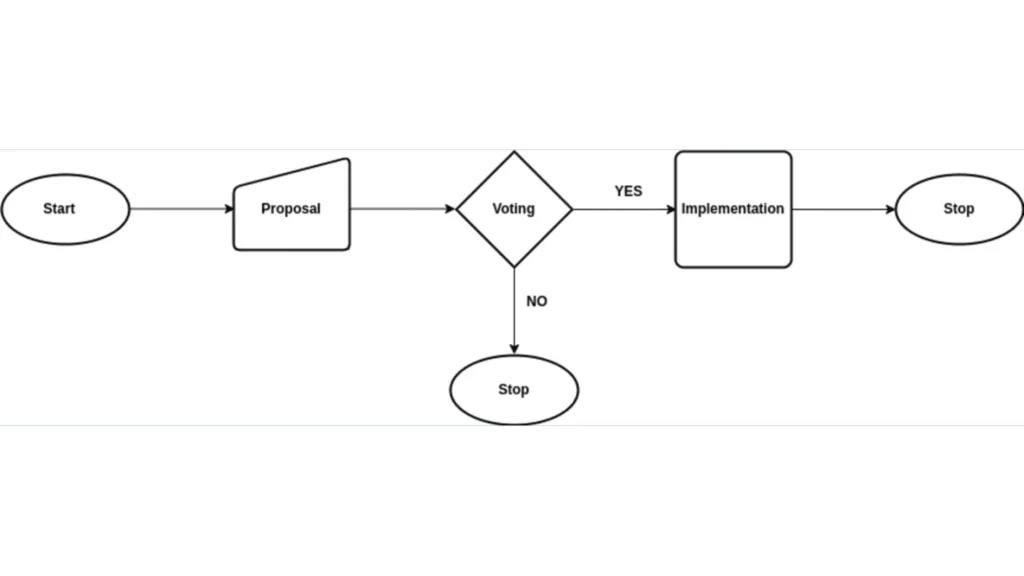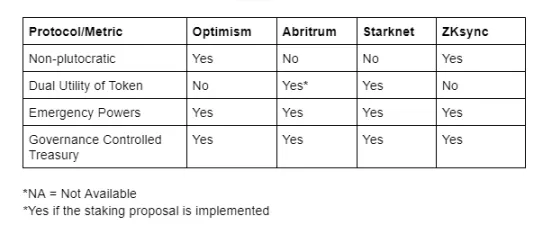Comparative Analysis of Governance Mechanisms in Ethereum L2
What Are Governance and Decentralization?
Decentralization refers to a structure that distributes control, where participants are part of a distributed network designed to minimize trust while ensuring the network operates effectively toward its goals.
Governance is a means to achieve decentralization, promoting decision-making, operations, and protocol development through blockchain technology, often relying on smart contracts and tokens held by participants. Next, we will compare the governance methods of Optimism and other L2 solutions, such as Arbitrum, Starknet, and ZKsync.

Optimism: Bicameral Governance
Optimism employs a non-oligarchic governance system to prevent control by a single entity or small group. This means that token holders are not the sole decision-makers for protocol upgrades, resource allocation, and innovation. Even with a large accumulation of OP governance tokens, controlling network value is not easy due to Optimism’s bicameral structure, which balances the citizen house and token house.
The Optimism Collective is an experimental governance body with rules that will continuously iterate, as they believe long-term visions can sometimes conflict with short-term values.
The token house consists of OP token holders who can vote directly or delegate their voting rights to trusted representatives. The citizen house is made up of reputable individuals in the Optimism ecosystem, with citizenship granted through non-transferable soulbound NFTs. The citizen house operates on a one-person-one-vote principle, fostering a democratic process.
The token house primarily handles protocol upgrades and project incentive voting, while the citizen house manages Retro Funding (retrospective public goods funding), ensuring that the protocol pursues long-term goals and prevents control by specific entities. The two houses provide checks and balances, allowing one house to veto the core responsibilities of the other.
Arbitrum: DAO, Delegation, and Staking Model
Arbitrum is governed by the Arbitrum DAO, composed of $ARB token holders who can propose and vote on network technology changes. Token holders can directly participate in governance or delegate representation.
Recently, the Arbitrum DAO passed a proposal to introduce $ARB token staking, transforming it from a purely governance token into a dual-function token. In the future, Arbitrum governance will be based on staked ARB tokens ($stARB). This change aims to enhance the value of $ARB and increase governance participation.
Arbitrum seeks to boost governance participation, as currently only about 10% of the circulating $ARB supply is used for governance. The Arbitrum DAO is managed through smart contracts that oversee an embedded treasury system. It also has a security committee that can quickly upgrade the protocol in emergencies.
The security committee is a critical part of the governance structure, responsible for decision-making in such key situations, with members elected by the Arbitrum DAO. Arbitrum’s governance structure leans toward oligarchy, as $ARB token holders are the primary decision-makers.
Starknet: Dual-Function Tokens and Virtual Governance
Starknet features a distinctive governance mechanism. Its base token, STRK, is not directly used for governance but serves as a network fee payment token. To participate in governance, STRK must be wrapped into vSTRK. Only vSTRK can be used for proposal voting or delegating voting rights.
vSTRK can be unwrapped back to STRK, but each operation incurs gas fees. Starknet employs “progressive governance” to gradually advance decentralization. It has multiple entities and committees guiding protocol development, including the Starknet Governance Committee, Builders Committee, and Starknet Foundation.
ZKsync: Separation of Powers
ZKsync’s governance method is based on three fundamental principles: resilience, distribution, and mission alignment. It ensures that no single entity can completely control the protocol, promoting long-term stability and community autonomy. The system is decentralized, with decision-making distributed among three bodies: the token holder assembly, security committee, and guardians.
The token holder assembly consists of token holders and representatives responsible for proposing and voting on protocol changes.
The security committee oversees technical upgrades and has the authority to address security risks.
Guardians ensure all proposals align with ZKsync’s core values and can veto inappropriate decisions. This layered governance structure creates checks and balances, enhancing transparency, security, and alignment with ZKsync’s mission.
Governance Comparison Summary

The above analysis shows that Optimism, Arbitrum, ZKsync, and Starknet all retain emergency powers to bypass governance procedures in critical situations, held within the protocol’s security committee. Similarly, they all have treasuries controlled by governance processes. Optimism and ZKsync feature non-oligarchic governance structures, diminishing the impact of economic power.
Simply holding more governance tokens does not automatically confer excessive influence. Starknet has a dual-function token. If staking proposals are implemented, Arbitrum’s governance token may soon also serve a functional purpose beyond voting. Currently, the governance tokens of Optimism and ZKsync remain purely governance tokens.
Conclusion
This article explores the current governance status of four leading Ethereum L2s. Optimism employs a bicameral system, balancing the citizen house and token house. Arbitrum is led by the Arbitrum DAO through $ARB token holders, leaning toward oligarchy. Starknet governance also adopts an oligarchic structure with a dual-function governance token but has multiple committees to guide development. ZKsync employs a separation of powers governance model.
Although their levels of decentralization vary, all protocols should strive to enhance decentralization to prevent censorship and control by malicious actors. There should also be further efforts to diminish the emergency powers of the security committee and explore innovative experiments to decentralize governance rights to the community.